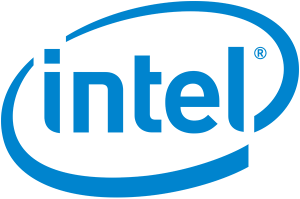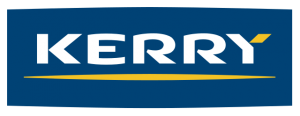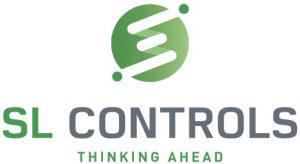Overview
Become confident with troubleshooting and maintaining Pneumatic and Vacuum systems. Get the theoretical knowledge, practical experience and thinking skills to maintain, set-up, align, tune, navigate and fault-find pneumatic and vacuum machine technologies. Custom designed training rigs and pick and place machine systems allow users to get hands-on with pneumatic systems, fostering a deep comprehension of their operation, troubleshooting and maintenance.
Who should attend
Maintenance technicians, operators, machine builders
Why Should I attend
Pneumatics and vacuum technologies have been used for decades and continue to be widely used in digital and highly automated industrial manufacturing because of their unique advantages, adaptability, and compatibility with smart Industry 4 environments. They are versatile, in that they can be applied to a wide range of industrial automation tasks, including pick and place operations, clamping and actuation. They are therefore a key technology set and a fundamental skillset for the versatile and capable manufacturing technician.
Learning Experience
There are three structured stages to the learner journey:
- Essential Theory and Safety awareness
- Discovery: Hands-on experimentation with a comprehensive range of pneumatic components, connected to mirror production applications.
- Application: Set-up, adjust and troubleshoot a pneumatic pick and place, transfer and test station with HMI and fault messages.
Course Objectives
At the end of the course participants will be able to:
- Identify standard pneumatic components and understand how they function. Explain using the correct terminology maintenance activities, setups and adjustments associated with industrial pneumatic and vacuum technology. This is to include: air service units, fittings, tubing, speed controllers, pilot check valves, control valves, actuators, limit switches and vacuum generation and its control equipment.
- Explain safe work practice in relation system repair including the challenges of stored energy and the hazards presented by compressed air.
- Interpret valve and pneumatic circuit diagrams and symbols to assist functional understanding and fault-finding.
- Demonstrate correct construction and verification of a pneumatic application involving a minimum of two actuators, limit switches, two valve types, dump valve and service unit.
- Demonstrate how a working knowledge of components used in pneumatic and vacuum technology can inform fault-finding on a range of typical machine system faults.
Course Modules
Equipment Characteristics, Operating Principles and specifications: – What You’ll Learn
- Hazards associated with compressed air including, crush hazard, air on skin, stored energy, safe isolation, and verification.
- Compressed air theory: practical examples of the interaction of pressure, volume, temperature and flow.
- Compressed air distribution and treatment.
- Air Service Unit components and their maintenance and setup requirements: Manual Dump valves, Soft-Start Valves, Filter/Separators, Pressure switches, Regulators.
- Valve types by name and specification, support with demonstration.
- Actuator types: Double acting, single acting, cushioning and shock absorbers, grippers, rotary actuators, rodless cylinders, flow-controls.
- Vacuum ejectors and vacuum switches.
Compressed Air and Vacuum Circuits: – What You’ll Learn
- Connect valves and cylinders to demonstrate the difference between 5/2 single, 5/2 double, 5/3 closed centre, 3/2 valve types. Operate by manual over-ride.
- Construct circuits using roller limits and pneumatic piloting valves.
- Electrical circuit theory, dump valve wiring and piping.
- Setting up and wiring limit switches.
- Tubing sizes, colour coding supplies, fitting types, flow controllers, double check valves, pilot release check valves
Maintenance & Troubleshooting – What You’ll Learn
- Fault messages associated with pneumatic actuation and list of possible causes.
- Troubleshooting strategy for a range of fault types
- Vacuum system fault messages and troubleshooting strategy
- Practice multiple fault-finding activities on pick and place unit.
- Diagnosis: compare message to observed machine status
- Vacuum switch tuning
- Burnt out solenoid.
- Piston seal leak.
- Torn vacuum cup, causing failed to pick message.
- Failed to pick based on alignment or inadequate vacuum pressure
QQI Assessment
- Theory Examination – 20% of overall mark
- Skills Demonstration – 50% of overall mark
- Project – 30% of overall mark
QQI Accreditation and Progression
This course leads to a QQI Level 6 Minor Award in Pneumatic & Vacuum Technology. This Award is one component of the Advanced Certificate in Industrial Automation Technology
Have a question about this or any other course? Contact us today.
Entry Requirements
Learners are required to have an NFQ or equivalent Level 5 Certificate in a technical or related discipline. Alternatively, if learners have reached the standards of knowledge, skill and competence associated with Level 5 they can apply for Recognition of Prior Learning for Access to the programme. Though not essential, learners will benefit from having some prior knowledge or exposure to pneumatics systems.
Competence in written and spoken English is essential. International students whose first language is not English are required to have an appropriate score in an approved examination in English language. We accept an IELTS test score of 6. We also accept IELTS equivalents such as TOELF and Cambridge exams.
If learners are completing part, or all, of the course online they should have good computer literacy skills. This includes use of email, microsoft word, internet searches. Self-directed learning also requires learners to have good self motivation and time management skills. Again, further details and tips can be found in the Learner Handbook.
If you are participating in a blended learning programme you will be required to have a laptop or desktop computer.
If you would like to assess your entry level knowledge, relative to course content, please contact us and we can set you up with a free trial on our e-learning platform.
When we recieve your booking request we will call you to go through an enrolment checklist with you to ensure that you meet all entry requirements for the course you have selected.
Have a question about this or any other course? We’d love to hear from you.







































